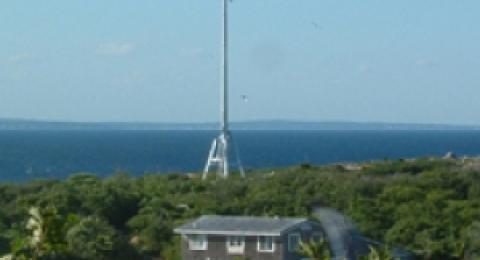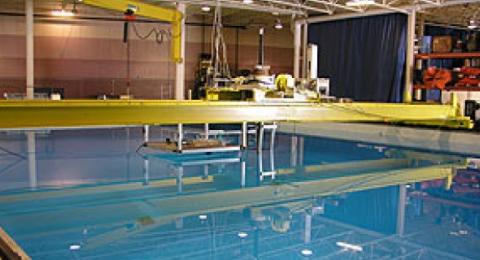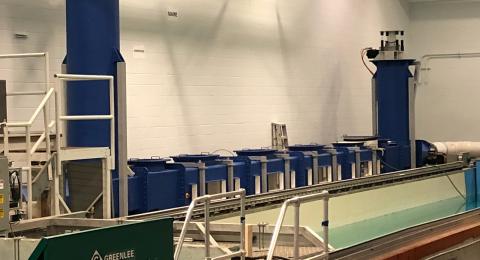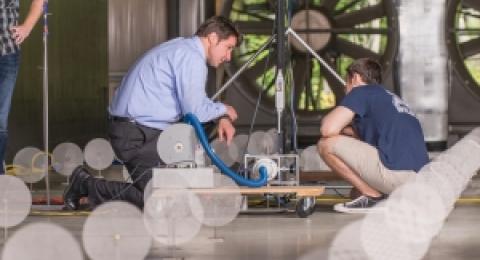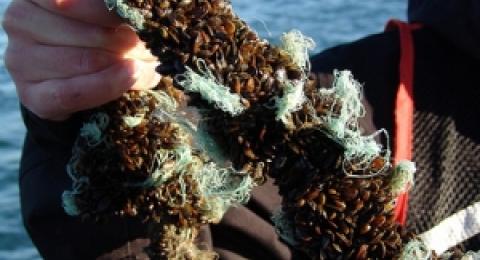Built in 2008 with funding from the National Oceanic and Atmospheric Administration, this is one of the finest atmospheric monitoring facilities in the world.
Learn More
Installed in 2008 with funding from the National Oceanic and Atmospheric Administration, this system provides 7.5 kW of electrical power year-round to operate the AIRMAP observatory on the island which is ~12 km offshore.
Learn More
The Center for Advanced Materials and Manufacturing Innovation (CAMMI) is an entryway into the University of New Hampshire for companies to share their challenges and explore collaboration opportunities.
Learn More
In addition to the university's main library, you'll find three libraries at the college devoted to the fields of engineering and physical sciences.
Learn More
The Jere A. Chase Ocean Engineering Laboratory, built in 1994, is home to the Center for Ocean Engineering and the headquarters for the Center for Coastal and Ocean Mapping/Joint Hydrographic Center (CCOM/JHC).
Learn More
Center for Ocean Renewable Energy
The Coastal Response Research Center (CRRC) was established as a partnership between the National Oceanic Atmospheric Administration (NOAA), through the Office of Response and Restoration (OR&R), and the University of New Hampshire (UNH), through the Environmental Research Group (ERG) in 2004.
Learn More
With a goal towards significantly advancing the simulation of flow physics and biogeochemical processes involved in aquatic marine and riverine environments, this effort supported the acquisition of an Environmental Flows Water Tunnel (EFWT). The EFWT accommodates both oscillatory and steady flow for the simulation of horizontal wave velocities, tidal flows, or steady currents with both high- and low-velocity magnitudes.
Learn More
Ocean Engineering
UNH is now home to a wind tunnel that is the largest of its type in the world. At 300 feet long, the new Flow Physics Facility (FPF) is the world’s largest scientific quality boundary-layer wind tunnel facility.
Learn More
The Judd Gregg Marine Science Complex supports research relating to marine life in the Gulf of Maine in areas ranging from ocean acidification to population biology.
Learn More
Built in 1950 and renovated in 2007, the new Kingsbury Hall provides our students the environment they need to learn to become the next generation of scientists, engineers and mathematicians.
Learn More
State-of-the-art and world-class help describe the classrooms, teaching labs, offices, libraries, and student project space available within the College of Engineering and Physical Sciences.
Learn More
The UNH tidal energy test site is at the General Sullivan Bridge where the Lower Piscataqua enters Little Bay through a constriction. The tidal range is nominally 8.2 ft (2.5 m), and approximately 40 percent of the volume of Great Bay flows under the bridge every tidal cycle. This results in peak current speeds of greater than 4 knots (2 m/s), as well as relatively short periods of slack water and a steep current speed ramp-up. UNH-CORE faculty have modeled the dynamics of this tidal system in several studies.
Learn More
Center for Ocean Renewable Energy
AMAC's goal is to provide the research and development necessary to stimulate an environmentally sustainable offshore aquaculture industry in New England and nationwide.
Learn More
The UNHSC is dedicated to the protection of water resources through effective stormwater management.
Learn More
The wave energy test site is located at the UNH Atlantic Marine Aquaculture (AMAC) site, which covers an area of 30 acres in 170 ft (52 m) of water approximately 6 miles from the New Hampshire coast. It has been successfully deployed under extreme New England winter conditions as a demonstration site for open ocean aquaculture for the past 10 years. The site has a subsurface mooring system and a large feed buoy (AMAC) is available as a useable platform and a potential end user load for any wave energy extraction device.
Learn More
Center for Ocean Renewable Energy

